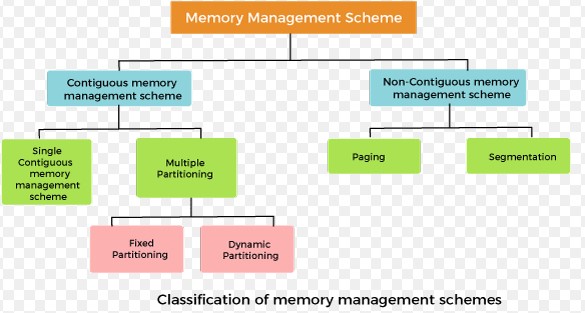DDR Memory (DRAM) and Virtual Shared Memory (VSEM) are two of the most popular types of memory used in computing systems. While both these memory types have their own advantages and disadvantages, they are very different from each other in terms of their application, speed, and cost.
Types of memory allocation

When it comes to memory allocation, there are two main types: dynamic memory (dmem) and virtual storage memory (vs mem). The difference between the two types lies in how memory is allocated to the system. Dynamic memory is allocated on-the-fly as the program is executing, while virtual storage memory is pre-allocated before the program runs.
Dynamic memory is allocated on-the-fly as the program is executing, while virtual storage memory is pre-allocated before the program runs. Dynamic memory is more efficient in terms of memory usage, as it only allocates memory to the program as needed, while virtual storage memory requires more memory upfront, can be slower, and is more difficult to manage.
Benefits of dmem and vsmem

When considering which type of memory to use for your device, it can be hard to decide between dmem and vsmem. Both offer different benefits depending on the application, so it is important to understand the difference between the two in order to make the best decision.
It is more expensive than vsmem but offers the benefit of being able to access data quickly and accurately. Vsmem, on the other hand, is a type of static random access memory that is best for applications that require data to remain unchanged.
It is less expensive than dmem but can take longer to access data. Ultimately, the best option depends on the requirements of the specific application.
Considerations for choosing between dmem and vsmem
When it comes to choosing between DMEM and VSMEM, there are a few considerations to keep in mind. DMEM stands for Distributed Memory and VSMEM stands for Virtual Shared Memory. DMEM is a distributed system, meaning that each node in the system is independent of each other and works together to achieve a common goal.
VSMEM, on the other hand, is a shared virtual memory system where each node shares memory and can access and modify memory that is stored on other nodes. The primary difference between these two systems is that DMEM relies on the exchange of messages between nodes, while VSMEM relies on shared memory.
DMEM is more suitable for applications that require high levels of parallelism, while VSMEM is better suited for applications that require frequent communication between nodes. Additionally, DMEM is more expensive to implement than VSMEM. When deciding between DMEM and VSMEM, it is important to consider the type of application being used, the cost of implementation, and the amount of communication required between nodes.
By understanding the differences between these two systems, one can make an informed decision about which system is best suited for their needs.
Performance comparison between dmem and vsmem
Have you ever been curious about the differences between dmem and vsmem? It can be confusing to determine which one is best for your needs.
dmem and vsmem are both memory allocation algorithms, but each has its own advantages and disadvantages. dmem is a static memory allocator that is optimized for data-intensive applications, while vsmem is a virtual memory allocator that is designed to improve the performance of virtual machines.
The main difference between the two is that dmem is better suited for applications that require frequent access to data, while vsmem is better for applications that require frequent access to virtual memory. Ultimately, the choice between dmem and vsmem will depend on the specific requirements of your application.
Tips to optimize memory utilization
If you’re looking to optimize memory utilization, it’s important to understand the difference between dmem and vsmem. Dmem, or dynamic memory, is memory that can be dynamically allocated to a process.
Vsmem, or virtual storage memory, is memory that is allocated to an application or process and then remains allocated until the application or process is ended. Because vsmem is not as dynamic as dmem, it can lead to inefficient use of memory if not managed properly.
To optimize memory utilization, it’s important to understand the differences between dmem and vsmem and use them in the appropriate situations.
Final Touch
In conclusion, the main difference between DMEM and VSEmem is that DMEM is a managed memory pool, which allows for more efficient memory allocation, while VSEmem is a virtual memory pool, which is more flexible and can be used to store larger amounts of data. DMEM is best suited for applications that require frequent memory allocation and deallocation, while VSEmem is ideal for applications that require large amounts of data storage. Both memory pools offer their own unique benefits, so it is important to consider the specific needs of your application before deciding which one to use.
Both memory pools offer their own unique benefits, so it is important to consider the specific needs of your application before deciding which one to use.

